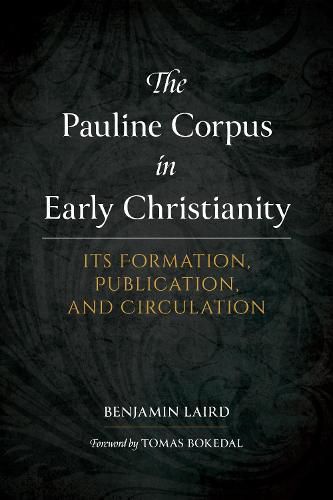Readings Newsletter
Become a Readings Member to make your shopping experience even easier.
Sign in or sign up for free!
You’re not far away from qualifying for FREE standard shipping within Australia
You’ve qualified for FREE standard shipping within Australia
The cart is loading…






The Pauline Corpus in Early Christianity: Its Formation, Publication, and Circulation offers a comprehensive and wide-ranging examination of the canonical development of the collection of writings associated with the Apostle Paul. The volume considers a number of clues from the New Testament writings, ancient literary conventions related to the composition and collection of letters, and a variety of early witnesses to the early state of the corpus such as biblical manuscripts, canonical lists, and the testimony of writers. As a conclusion to these inquiries, Laird argues that at least three major archetypal editions of the Pauline corpus-those containing 10, 13, and 14 letters-appear to have been collected and edited as early as the first century. These major archetypal editions, Laird concludes, circulated simultaneously for many years until editions containing 14 letters became nearly universally recognized by the fourth century. The volume serves as a valuable resource of information for those engaged in the study of the early state of the New Testament canon and offers a fresh perspective on the process that led to the formation of the Pauline corpus.
$9.00 standard shipping within Australia
FREE standard shipping within Australia for orders over $100.00
Express & International shipping calculated at checkout
The Pauline Corpus in Early Christianity: Its Formation, Publication, and Circulation offers a comprehensive and wide-ranging examination of the canonical development of the collection of writings associated with the Apostle Paul. The volume considers a number of clues from the New Testament writings, ancient literary conventions related to the composition and collection of letters, and a variety of early witnesses to the early state of the corpus such as biblical manuscripts, canonical lists, and the testimony of writers. As a conclusion to these inquiries, Laird argues that at least three major archetypal editions of the Pauline corpus-those containing 10, 13, and 14 letters-appear to have been collected and edited as early as the first century. These major archetypal editions, Laird concludes, circulated simultaneously for many years until editions containing 14 letters became nearly universally recognized by the fourth century. The volume serves as a valuable resource of information for those engaged in the study of the early state of the New Testament canon and offers a fresh perspective on the process that led to the formation of the Pauline corpus.